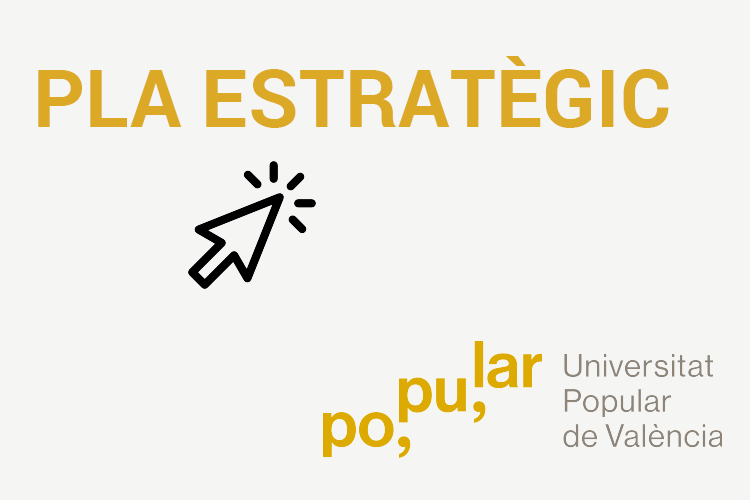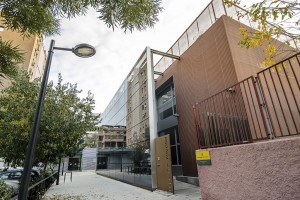Do you want to catch a glimpse of the amazing London Town? Well, then, the English activity from #UPBenimamet invites you through these links not only to catch a simple glimpse but to show you the whole city. Why don’t you dare to travel while staying at home?
CAP. 1 A Grand Tour around London.
London Vacation Travel Guide: https://youtu.be/
LONDON-CITY TOUR 2017 / LET’S TRAVEL: https://youtu.be/bAgkeogi_
CAP. 2 Two Magnificent Religious Buildings
-Would you like to know two of the most magnificent religious buildings in London City? Well, just stay at home and relax. The #English activity from #UPBenimamet invites you through these links to watch these two videos about Westminster Abbey and Saint Paul’s Cathedral Enjoy them!
-¿Te gustaría conocer dos de los mas magníficos edificios religiosos de la cudad de Londres? Bueno, pues, la actividad de #inglés de la #UPBenimamet te invita a través de estos links a ver estos dos videos sobre la Abadía de Westminster y la Catedral de San Pablo. ¡Que los disfrutes!
INSIDE WESTMINSTER ABBEY TOUR & REVIEW : https://youtu.be/s0C0syR9Mog
SAINT PAUL CATHEDRAL, LONDON : https://youtu.be/1eTv9pYVzMY
Cap. 3 LONDON MUSEUMS
Now that the Easter holydays are over, we are going to continue visiting our beloved London.The #English teacher, Jose Lozano, from #UPBENIMAMET invites you to relax and visit virtually four of the most important London museums without leaving home: British Museum, Tate Britain Museum, National Gallery and Science Museum. So, #StayAtHomeAndVisitLondon !!!
Ahora que las vacaciones de de Pascua han acabado, vamos a continuar visitando nuestra querida Londres.El formador de #Inglés, José Lozano, de la #UPBENIMAMET os invita a relajaron y visitar virtualmente cuatro de los museos londinenses mas importantes sin salir de casa: British Museum, Tate Britain Museum, National Gallery y Science Museum. Así que, #StayAtHomeAndVisitLondon !!!
BRITISH MUSEUM
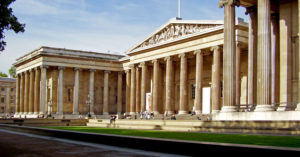
The British Museum’s outstanding collection spans over two million years of human history and culture. Over 6 million visitors every year enjoy its collection, including world-famous objects such as the Rosetta Stone, the Parthenon sculptures, and Egyptian mummies.
La extraordinaria colección de The British Museum abarca alrededor de dos millones de años de la historia y cultura de la humanidad. Más de 6 millones de visitantes disfrutan cada año de su colección, que incluyen objetos mundialmente famoso como la piedra Rosetta, Las esculturas del Parthenon, y las momias egipcias.
Visit the museum through this link: / Visita el museo a través de este link:/ Visita el museu a través d’aquest link:
https://www.britishmuseum.org/
TATE BRITAIN MUSEUM
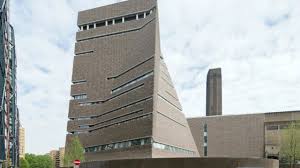
Tate Britain (known from 1897 to 1932 as the National Gallery of British Art and from 1932 to 2000 as the Tate Gallery) is an art museum on Millbank in the City of Westminster in London. It is part of the Tate network of galleries in England, with Tate Modern, Tate Liverpool and Tate St Ives. It is the oldest gallery in the network, having opened in 1897. It houses a substantial collection of the art of the United Kingdom since Tudor times, and in particular has large holdings of the works of J. M. W. Turner, who bequeathed all his own collection to the nation. It is one of the largest museums in the UK.
Tate Britain (conocida desde 1897 hasta 1932 como la National Gallery of British Art y desde 1932 hasta el año 2000 como la Tate Gallery) es un museo de arte en Millbank en la ciudad de Westminster en Londres. Forma parte de la red de Galerías Tate en Inglaterra, junto con Tate Modern, Tate Liverpool y Tate St. Ives. Es la galería mas antigua de la red, habiéndose abierto en 1897. Alberga una colección importante de arte del Reino Unido desde la época Tudor, y en particular es propietaria de una amplia cantidad de trabajos del pintor J.M. Turner, que fueron legadas por él a la nación. Se trata de uno de los museos mas grandes del Reino Unido.
Visit the museum through this link: / Visita el museo a través de este link:/ Visita el museu a través d’aquest link:
https://www.tate.org.uk/visit/tate-britain
NATIONAL GALLERY
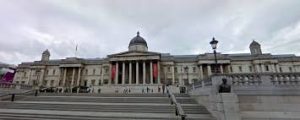
The National Gallery Collection contains over 2,300 very famous art works, such as van Eyck’s ‘Arnolfini Portrait’, Velázquez’s ‘Rokeby Venus’, Turner’s ‘Fighting Temeraire’ and Van Gogh’s ‘Sunflowers’.
All major traditions of Western European painting are represented in its collection from the artists of Middle Age and Renaissance Italy to the French Impressionists.
– 13th- to 15th-century paintings: Duccio, Uccello, van Eyck, Lippi, Mantegna, Botticelli, Dürer, Memling, Bellini
– 16th-century paintings: Leonardo, Cranach, Michelangelo, Raphael, Holbein, Bruegel, Bronzino, Titian, Veronese
– 17th-century paintings: Caravaggio, Rubens, Poussin, Van Dyck, Velázquez, Claude, Rembrandt, Cuyp, Vermeer
– 18th- to early 20th-century paintings: Canaletto, Goya, Turner, Constable, Ingres, Degas, Cézanne, Monet, Van Gogh
La colección de la National Gallery contiene mas de 2.300 obras artísticas muy famosas, como por ejemplo ‘El retrato Arnolfini de Eycks , `La Venus del espejo´ de Velázquez , ‘Fighting Temeraire’ de Turner o ‘Los Girasoles’ de Van Gogh. Las principales tendencias pictóricas de Europa Occidental estan representadas en su colección desde los artistas del Medievo y del Renacimiento Italiano hasta los impresionistas franceses. Incluye obras de los siglos XIII al XV de Duccio, Uccello, van Eyck, Lippi, Mantegna, Botticelli, Dürer, Memling, Bellini; así como obras del siglo XVI de Leonardo, Cranach, Michelangelo, Raphael, Holbein, Bruegel, Bronzino, Titian, Veronese. Del siglo XVII se pueden apreciar obras de Caravaggio, Rubens, Poussin, Van Dyck, Velázquez, Claude, Rembrandt, Cuyp, Vermeer; para finalizar con obras pictóricas del siglo 18 al 20 de autores tan famosos como Canaletto, Goya, Turner, Constable, Ingres, Degas, Cézanne, Monet, Van Gogh.
Visit the museum through this link: / Visita el museo a través de este link:/ Visita el museu a través d’aquest link:
https://www.nationalgallery.org.uk/
SCIENCE MUSEUM
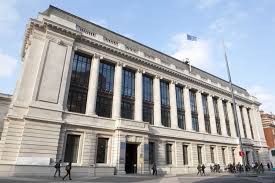
Striving to be the best place in the world for people to enjoy science, the Science Museum’s collection forms an enduring record of scientific, technological and medical achievements from across the globe. It aims to inspire visitors with award-winning exhibitions, iconic objects and stories of incredible scientific achievement.
Intentando ser el mejor lugar del mundo para la gente que disfruta de la ciencia, la colección del Science Museum configura un registro duradero de los avances científicos, tecnológicos y médicos de todo el globo. Intenta inspirar a sus visitantes con exhibiciones ganadoras de premios, objetos icónicos e historias de increíble alcance científico.
Visit the museum through this link: / Visita el museo a través de este link:/ Visita el museu a través d’aquest link:
https://www.sciencemuseum.org.uk/home
Cap. 4 THE WESTMINSTER PALACE ( Houses of Parliament) and the Big Ben.
And now, What about visiting one of the most emblematic places in London?
One of the most visited surroundings in the city?
The Westminster Palace, better known as the Houses of Parliament. Its name derives from the neighboring Westminster Abbey and it serves as the meeting place for both the House of Commons and the House of Lords, the two houses of the Parliament of the United Kingdom.
The Palace, which lies on the north bank of the River Thames in the City of Westminster in central London, makes reference to either of its two original structures: the Old Palace, a medieval building-complex destroyed by fire in 1834, or its replacement, the New Palace that stands today; and it is owned by the monarch in right of the Crown and, for ceremonial purposes, retains its original status as a royal residence
The #English activity of #UPBenimàmet invites you all to visit its outside surroundings and its inside secrets through these two videos and links:
-
Charles Barry and A.W.N. Pugin, Palace of Westminster (Houses of Parliament): https://www.youtube.com/watch?v=7oBUIo5R5qg&t=20s
2. Inside The Houses of Parliament: https://www.youtube.com/watch?v=tYn-ma_AwkI&t=48s
3. Take a tour of the House of Lords : https://www.youtube.com/watch?v=_sLZBWcPklk
- Palace of Westminster in Night – HD: https://www.youtube.com/watch?v=GC3XkInHBXE
But Westminster palace is not only famous because it houses the British Parliament but also the most famous attraction in the city: the Clock Tower, known as Big Ben. This is the nickname for the Great Bell of the striking clock and it is usually extended to refer to both the clock and the clock tower. But the official name of the tower in which Big Ben is located, originally the Clock Tower, was renamed as Elizabeth Tower in 2012 to mark the Diamond Jubilee of Elizabeth II.
Big Ben is the largest of the tower’s five bells and weighs 13.5 long tons . It was the largest bell in the United Kingdom for 23 years. The origin of the bell’s nickname is open to question; it may be named after Sir Benjamin Hall, who oversaw its installation, or heavyweight boxing champion Benjamin Caunt.
Four quarter bells chime at 15, 30 and 45 minutes past the hour and just before Big Ben tolls on the hour. The clock uses its original Victorian mechanism, but an electric motor can be used as a backup.
Let’s know more about the tower, its clock and its functioning mechanism through these two video Links:
-
Big Ben History: https://www.youtube.com/watch?v=TyXrHfz9lAY
6. The Mechanical Genius of Big Ben | Blowing Up History: https://www.youtube.com/watch?v=_Elffjsjbio
En CASTELLANO:
THE WESTMINSTER PALACE ( Houses of Parliament) and the Big Ben.
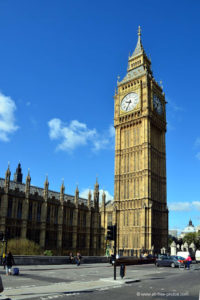
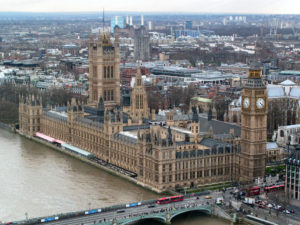
Y ahora, ¿qué tal si visitamos uno de los lugares más emblemáticos de Londres? ¿Uno de los alrededores más visitados de la ciudad?
El palacio de Westminster, mejormente conocido como la Casa del Parlamento.
Su nombre deriva de la vecina Abadía de Westminster y sirve como el lugar de encuentro de ambas cámaras parlamentarias, la cámara de los comunes y la cámara de los Lores, las dos cámaras que componen el parlamento del Reino Unido.
El palacio, que se encuentra en el lado norte del rio Támesis en la ciudad de Westminster en el Londres central, hace referencia ambas de sus estructuras originales: el viejo palacio, un complejo medieval destruido por el gran incendio de 1884, y su reemplazo, el nuevo palacio tal y como se encuentra hoy; es propiedad del monarca que sustenta la corona y, para propósitos ceremoniales, mantiene su estatus como residencia real.
La actividad de #Inglés de #UPBBenimàmet os invita a todos a visitas tanto su exterior como sus secretos interiores a través de estos dos video links:
-
Charles Barry and A.W.N. Pugin, Palace of Westminster (Houses of Parliament): https://www.youtube.com/watch?v=7oBUIo5R5qg&t=20s
- Inside The Houses of Parliament: https://www.youtube.com/watch?v=tYn-ma_AwkI&t=48s
- Take a tour of the House of Lords : https://www.youtube.com/watch?v=_sLZBWcPklk
- Palace of Westminster in Night – HD: https://www.youtube.com/watch?v=GC3XkInHBXE
Pero el Palacio de Westminster no es solo famoso porque alberga al Parlamento Británico sino también al mas famoso icono de la ciudad: La Torre del reloj, conocida como Big Ben. Este apodo se debe a la gran campana que marca las horas del reloj, y habitualmente se utiliza por extensión también para referirse tanto al reloj como a la torre. Pero el nombre oficial de la torre en la que se encuentra la campana, llamada originalmente la Torre del Reloj, fue renombrada como la Torre Elizabeth en 2012 para conmemorar el `Diamond jubilee´ de Elizabeth II, R.
El Big Ben es la campana más grande de la torre y pesa 13,5 toneladas. Fue la campana más grande del Reino Unido durante 23 años. El origen del apodo aun es una cuestión abierta: puede referirse a Sir Benjamin Hall, que supervisó su instalación. O bien al campeón de los pesos pesados de boxeo Benjamín Caunt.
La campana suena para marcar los cuatro cuartos de la hora y además de la hora en punto. El reloj utiliza su mecanismo victoriano original, pero un motor eléctrico se puede utilizar como suplemento.
Conozcamos mas sobre la torre, el reloj y su mecanismo de funcionamiento: a través de estos dos links:
-
Big Ben History: https://youtu.be/TyXrHfz9lAY
-
The Mechanical Genius of Big Ben | Blowing Up History: https://youtu.be/_Elffjsjbio
CHAPTER 5. Buckingham Palace and other London’s Royal residences.
Now, in this fifth chapter, José Lozano, the teacher of #English at the #UPBenimàmet leads you into Royalty and our next step will be visiting the palace of Buckingham and other Royal London residences.
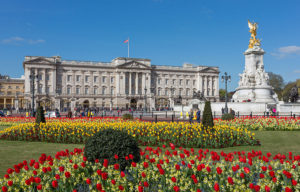 Buckingham Palace is the most important London residence of the monarchy of the United Kingdom, and it is not only considered as its administrative headquarters, but also as the centre of state occasions and royal hospitality, and a focal point for the British people at times of national rejoicing and mourning.
Buckingham Palace is the most important London residence of the monarchy of the United Kingdom, and it is not only considered as its administrative headquarters, but also as the centre of state occasions and royal hospitality, and a focal point for the British people at times of national rejoicing and mourning.
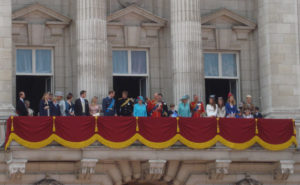 The land on which Buckingham Palace sits, in the borough of London known as Westminster, has been in the hands of the British monarchy for more than 400 years. It seems that King James I liked the site, and acquired it for use as a sort of garden for the royals. It also had a small, 4-acre grove of mulberry trees, which King James hoped to use for silk production (silkworms feed only on mulberry trees). At that time, there was a house on the property, and it passed through a succession of owners until 1698, when it was sold to John Sheffield, who later became the duke of Buckingham; and that is why the building was originally known as Buckingham House. Sheffield, finding the original house on the property outdated, decided to build a new residence on the site in the early 1700s., which can be considered as the building core of today’s palace.
The land on which Buckingham Palace sits, in the borough of London known as Westminster, has been in the hands of the British monarchy for more than 400 years. It seems that King James I liked the site, and acquired it for use as a sort of garden for the royals. It also had a small, 4-acre grove of mulberry trees, which King James hoped to use for silk production (silkworms feed only on mulberry trees). At that time, there was a house on the property, and it passed through a succession of owners until 1698, when it was sold to John Sheffield, who later became the duke of Buckingham; and that is why the building was originally known as Buckingham House. Sheffield, finding the original house on the property outdated, decided to build a new residence on the site in the early 1700s., which can be considered as the building core of today’s palace.
Later on, this large house was acquired by King George III in 1761. He renovated its structure as a private residence for his wife Queen Charlotte and their children. And, after his family moved in, the building became known as the “Queen’s House.”
In 1802 His son George IV , who had grown up in Buckingham House, favored the building and made it the official royal residence. He hired the architects John Nash and Edward Blore to enlarge and renovate the building structure and they constructed three more wings around a central courtyard. But, when George IV died and his brother William IV, ascended to the throne in 1830, he had no interest in relocating to the newly built Buckingham Palace and preferred his princely home, Clarence Palace, instead.
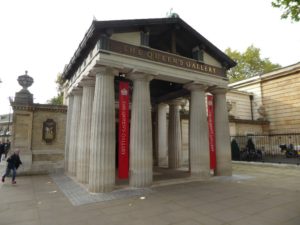 In 1833-34, the British Parliament voted to complete the furnishing and interior refurbishment of Buckingham Palace for use as the official royal home. Following William IV’s death, in 1837, his niece, Victoria, assumed the throne and Buckingham Palace became the London residence of the British monarchs until today. Its Construction was completed in 1853, and Queen Victoria reigned and lived here until her death in 1901. Her son Edward VII ascended to the throne, and he is credited with an interior redesign of the palace, the remnants of which can still be seen today.
In 1833-34, the British Parliament voted to complete the furnishing and interior refurbishment of Buckingham Palace for use as the official royal home. Following William IV’s death, in 1837, his niece, Victoria, assumed the throne and Buckingham Palace became the London residence of the British monarchs until today. Its Construction was completed in 1853, and Queen Victoria reigned and lived here until her death in 1901. Her son Edward VII ascended to the throne, and he is credited with an interior redesign of the palace, the remnants of which can still be seen today.
The last major structural additions were made during the late 19th and 20th centuries; including the East Front, which contains the well-known balcony on which the royal family traditionally congregates to greet crowds. Since Queen Victoria’s first appearance, standing on Buckingham’s balcony has become something of a tradition for royal events. In 2002, Queen Elizabeth waved to the crowds from the balcony in celebration of her Golden Jubilee.
Nowadays the building is 830,000 square feet, has 775 rooms, including 52 royal and guest bedrooms, 188 staff bedrooms, 92 offices and 78 bathrooms, and its beautiful 39-acre garden can be considered the largest private garden in London. Its state rooms, used for official and state entertaining, are open to the public each year for most of August and September and only on some days in winter and spring.
The palace also houses a small public art Gallery, known as the Queen’s Gallery. This Gallery, which was opened to the public in 1962, is located on the site of a private chapel which was destroyed during the second World War under an air raid in 1940. It exhibits works of art from the Royal Collection. The gallery was established to make the Royal Collection more accessible; approximately three art exhibitions are arranged annually. Its collection has been created mainly since the time of Charles II in the mid-17th century. It contains an outstanding collection of oil paintings, watercolors, drawings, and prints, as well as many items of gold, silver, jewelry, furniture, and other decorative art. The extent of the quality of the collection is widely known. They have included shows on individual artists such as Michelangelo, Van Dyck, Hans Holbein the Younger, Canaletto, Thomas Gainsborough, and George Stubbs.
When people visit London, they always feel curious about Buckingham Palace and what it has to offer. The building is not only part of the grounds worth checking out. There are some other appealing places and attractions:
- The Royal garden which is enclosed in its surrounding grounds and occupies 42 acres in the City of Westminster, it includes the famous the Rose Garden (with 25 different varieties, including one created in honor of William called Royal William), a tennis court, and a three-acre lake. Being also known as the Memorial Gardens, the flowerbeds at Buckingham are laid out in a semi-circular design and include some exotic plants as scarlet geraniums, spider plants, and weeping figs. The garden also includes a mulberry tree that dates back to the time of James I of England (1567).
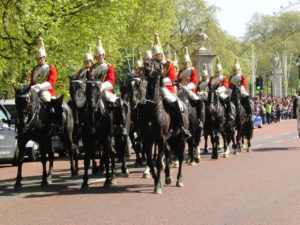 The Royal Changing of the Guard Ceremony: During this ceremonyin one regiment takes over for another. Per tradition, the New Guard march to Buckingham Palace from Wellington Barracks with musical accompaniment, thereby becoming the Queen’s Guard during the course of the ceremony. Also known as «Guard Mounting,» the tradition takes place at 11 a.m. every other day and daily during the summer.
The Royal Changing of the Guard Ceremony: During this ceremonyin one regiment takes over for another. Per tradition, the New Guard march to Buckingham Palace from Wellington Barracks with musical accompaniment, thereby becoming the Queen’s Guard during the course of the ceremony. Also known as «Guard Mounting,» the tradition takes place at 11 a.m. every other day and daily during the summer.
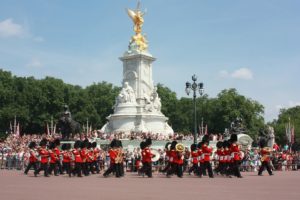 The Victoria Memorial is a sculpture located in the center of the Queen’s Gardens, opposite Buckingham Palace, in London. The sculpture was completed in 1911, being its sculptor Sir Thomas Brock. What surrounds the sculpture was built by Sir Aston Webb, with some 2,300 tons of white marble. The Queen Victoria Memorial has a large statue of Queen Victoria which faces northeast towards The Mall. In the other parts of the monument, there are bronze statues, with the Angel of Justice (facing northwest, Green Park), the Angel of Truth (facing southeast) and Charity facing Buckingham Palace. Queen Victoria is at the top with two seated figures. The filial figures were given away by the people of New Zealand. The entire sculpture has a nautical theme, and this can be seen in the sea mermaids, and the mythological figures related to the sea, which suggest the naval supremacy of the United Kingdom.
The Victoria Memorial is a sculpture located in the center of the Queen’s Gardens, opposite Buckingham Palace, in London. The sculpture was completed in 1911, being its sculptor Sir Thomas Brock. What surrounds the sculpture was built by Sir Aston Webb, with some 2,300 tons of white marble. The Queen Victoria Memorial has a large statue of Queen Victoria which faces northeast towards The Mall. In the other parts of the monument, there are bronze statues, with the Angel of Justice (facing northwest, Green Park), the Angel of Truth (facing southeast) and Charity facing Buckingham Palace. Queen Victoria is at the top with two seated figures. The filial figures were given away by the people of New Zealand. The entire sculpture has a nautical theme, and this can be seen in the sea mermaids, and the mythological figures related to the sea, which suggest the naval supremacy of the United Kingdom.
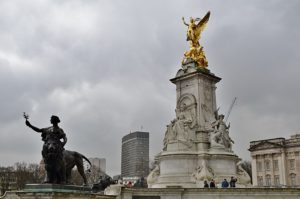 The following links will improve your experience on visiting Buckingham palace, its surroundings, its private interiors and its most captivating attractions:
The following links will improve your experience on visiting Buckingham palace, its surroundings, its private interiors and its most captivating attractions:
BUCKINGHAM PALACE : https://www.youtube.com/watch?v=ApS-QVpwAPM&list=RDCMUCYlW84S3ZOS4RpCmTKBdGow&index=8
https://www.youtube.com/watch?v=ApS-QVpwAPM&list=RDCMUCYlW84S3ZOS4RpCmTKBdGow&index=8
INSIDE BUCKINGHAM PALACE GRAND TOUR: https://www.youtube.com/watch?v=O_fe_b67IqY
https://www.youtube.com/watch?v=O_fe_b67IqY
THE QUEEN’S GARDEN / Garden Party : https://www.youtube.com/watch?v=C3txy5vM8nA
THE CHANGING OF THE GUARD: https://www.youtube.com/watch?v=1wFOIR_uPCw
THE UNVEILING OF THE QUEEN VICTORIA MEMORIAL (1911): https://www.youtube.com/watch?v=R_YUnORqOzU
VICTORIA MEMORIAL AT BUCKINGHAM PALACE: https://www.youtube.com/watch?v=qZewturXN70
QUEEN’S GALLERY:
https://www.rct.uk/visit/the-queens-gallery-buckingham-palace
And as a BONUS INFORMATION, what about snooping around other ROYAL RESIDENCES through these two new Links?
LONDON ROYAL RESIDENCES: https://www.youtube.com/watch?v=I6FBsAM8Eek
ROYAL RESIDENCES (WEB): https://www.royal.uk/royal-art-and-residences
CASTELLANO:
Capítulo V: Palacio de Buckingham y otras residencias reales de Londres.
Ahora, en este quinto capítulo, José Lozano, el formador de #Inglés de la #UPBenimàmet te introduce en la realeza; así que nuestro próximo paso será visitar el palacio de Buckingham y otras residencias del Londres monárquico.
El Palacio de Buckingham es la residencia londinense más importante de la monarquía del Reino Unido, y no solo se considera como su sede administrativa, sino también como el centro de los eventos de Estado y de la hospitalidad real, así como un punto focal para el pueblo británico en momentos de regocijo y duelo nacional.
La tierra sobre la que se encuentra el Palacio de Buckingham, en el barrio de Londres conocido como Westminster, ha estado en manos de la monarquía británica durante más de 400 años. Parece que al Rey James me gustó el emplazamiento, y lo adquirió para usarlo como una especie de jardín para la realeza. También tenía un pequeño bosque de moreras de 4 acres, que el rey James I esperaba usar para la producción de seda (los gusanos de seda solo se alimentan de moreras). En ese momento, había una casa en la propiedad, y pasó por una sucesión de propietarios hasta 1698, cuando fue vendida a John Sheffield, quien más tarde se convirtió en duque de Buckingham; y es por eso que el edificio fue originalmente conocido como Buckingham House. Sheffield, al encontrar la casa original en la propiedad anticuada, decidió construir una nueva residencia en el mismo emplazamiento a principios de 1700, lo que puede considerarse como el núcleo del edificio del palacio de hoy.
Más tarde, esta gran casa fue adquirida por el rey Jorge III en 1761. Renovó su estructura como residencia privada para su esposa, la reina Charlotte y sus hijos. Y, después de que su familia se mudara allí, al edificio se le conoció como la «Casa de la Reina».
En 1802, su hijo Jorge IV, que había crecido en Buckingham House, favoreció el edificio y lo convirtió en la residencia real oficial. Contrató a los arquitectos John Nash y Edward Blore para ampliar y renovar la estructura del edificio y construyeron tres alas más alrededor de un patio central. Pero cuando George IV murió y su hermano William IV ascendió al trono en 1830, no tenía interés en trasladarse al recién construido Palacio de Buckingham y prefirió su hogar principesco, el Palacio de Clarence.
En 1833-34, el Parlamento británico votó para completar el equipamiento y la renovación interior del Palacio de Buckingham para su uso como hogar real oficial. Tras la muerte de Guillermo IV, en 1837, su sobrina, Victoria, asumió el trono y el Palacio de Buckingham se convirtió en la residencia de Londres de los monarcas británicos hasta hoy. Su construcción se completó en 1853, y la reina Victoria reinó y vivió allí hasta su muerte en 1901. Su hijo Eduardo VII ascendió al trono, y se le atribuye un rediseño interior del palacio, cuyos restos aún se pueden ver hoy.
Las últimas importantes adiciones estructurales se realizaron a fines del siglo XIX y XX; incluido el Frente Este, que contiene el conocido balcón en el que la familia real se congrega tradicionalmente para saludar a las multitudes. Desde la primera aparición de la Reina Victoria, aparecer en el balcón del palacio de Buckingham se ha convertido en una tradición para los eventos reales. En 2002, la reina Isabel II saludó a la multitud desde el balcón en la celebración de su jubileo de oro.
Hoy en día, el edificio tiene 830,000 pies cuadrados, tiene 775 habitaciones, incluidas 52 habitaciones reales y de invitados, 188 habitaciones para el personal, 92 oficinas y 78 baños, y su hermoso jardín de 39 acres puede considerarse el jardín privado más grande de Londres. Sus salones oficiales de Estado, utilizadas para el entretenimiento oficial y estatal, están abiertas al público cada año durante la mayor parte de agosto y septiembre y solo algunos días en invierno y primavera.
El palacio también alberga una pequeña Galería pública de arte, conocida como la Galería de la Reina. Esta galería, que se abrió al público en 1962, se encuentra en el sitio de una capilla privada que fue destruida durante la Segunda Guerra Mundial bajo un ataque aéreo en 1940. Exhibe obras de arte de la Colección Real. La galería se estableció para hacer más accesible la Colección Real; aproximadamente tres exposiciones de arte se organizan anualmente. Su colección ha sido creada principalmente desde la época de Carlos II a mediados del siglo XVII. Contiene una excelente colección de pinturas al óleo, acuarelas, dibujos y grabados, así como muchos artículos de oro, plata, joyas, muebles y otras artes decorativas. El alcance de la calidad de la colección es ampliamente conocido. Han incluido exhibiciones sobre artistas individuales como Miguel Ángel, Van Dyck, Hans Holbein el joven, Canaletto, Thomas Gainsborough y George Stubbs.
Cuando la gente visita Londres, siempre sienten curiosidad por el Palacio de Buckingham y lo que tiene que ofrecer. El edificio no es solo parte de los terrenos que valen la pena visitar. Hay algunos otros lugares y atracciones atractivas:
- El Jardín Real , que está cercado en sus terrenos circundantes y ocupa 42 acres de la zona de Westminster, incluye el famoso Rose Garden (con 25 variedades diferentes, incluyendo una creada en honor de William llamada Royal William), una cancha de tenis, y un lago de tres acres. Siendo también conocidos como Memorial Gardens, los parterres de flores en Buckingham se presentan en un diseño semicircular e incluyen algunas plantas exóticas como geranios escarlatas, plantas de araña e higueras lloronas. El jardín también incluye un árbol de morera que se remonta a la época de James I de Inglaterra (1567).
- La Ceremonia de Cambio Real de la Guardia: Durante esta ceremonia un regimiento releva al otro. Por tradición, la Nueva Guardia marcha al Palacio de Buckingham desde Wellington Barracks con acompañamiento musical, convirtiéndose así en la Guardia de la Reina durante el curso de la ceremonia. También conocida como «la Guardia Montada», la tradición tiene lugar a las 11 a.m. cada dos días y todos los días durante el verano.
- El Victoria Memorial es una escultura ubicada en el centro de los Jardines de la Reina, frente al Palacio de Buckingham, en Londres. La escultura se completó en 1911, siendo su escultor Sir Thomas Brock. Lo que rodea la escultura fue construida por Sir Aston Webb, con unas 2.300 toneladas de mármol blanco. El Queen Victoria Memorial tiene una gran estatua de la Reina Victoria que mira hacia el noreste hacia The Mall. En las otras partes del monumento, hay estatuas de bronce, con el Ángel de la Justicia (hacia el noroeste, Green Park), el Ángel de la Verdad (hacia el sureste) y la Caridad frente al Palacio de Buckingham. La reina Victoria está en la cima con dos figuras sentadas. Las figuras filiales fueron regaladas por la gente de Nueva Zelanda. Toda la escultura tiene un tema náutico, y esto se puede ver en las sirenas del mar y las figuras mitológicas relacionadas con el mar, lo que sugiere la supremacía naval del Reino Unido.
Los siguientes enlaces mejorarán tu experiencia al visitar el palacio de Buckingham, sus alrededores, sus interiores privados y sus atracciones más cautivadoras:
BUCKINGHAM PALACE :
https://www.youtube.com/watch?v=ApS-QVpwAPM&list=RDCMUCYlW84S3ZOS4RpCmTKBdGow&index=8
INSIDE BUCKINGHAM PALACE GRAND TOUR:
https://www.youtube.com/watch?v=O_fe_b67IqY
THE QUEEN’S GARDEN / Garden Party :
https://www.youtube.com/watch?v=C3txy5vM8nA
THE CHANGING OF THE GUARD:
https://www.youtube.com/watch?v=1wFOIR_uPCw
THE UNVEILING OF THE QUEEN VICTORIA MEMORIAL (1911):
https://www.youtube.com/watch?v=R_YUnORqOzU
VICTORIA MEMORIAL AT BUCKINGHAM PALACE:
https://www.youtube.com/watch?v=qZewturXN70
QUEEN’S GALLERY:
https://www.rct.uk/visit/the-queens-gallery-buckingham-palace
Y como INFORMACIÓN ADICIONAL, ¿qué tal si curioseamos en otras RESIDENCIAS REALES a través de estos dos nuevos Enlaces?
LONDON ROYAL RESIDENCES:
https://www.youtube.com/watch?v=I6FBsAM8Eek
ROYAL RESIDENCES (WEB)
https://www.royal.uk/royal-art-and-residences
INDICACIONES PARA LA ACTIVIDAD:
Los participantes podrán visualizar y recibir información con cierta periodicidad a través de determinados links de videos y páginas de internet algunos de los lugares más emblemáticos de la capital del Reino Unido; de tal forma que puedan ser difundido y compartidos entre los participantes tomando el link de la web www.universitatpopular.com/upacasa con el hashtag #stayathomeandvisitlondon en sus redes sociales.
¿Con qué materiales?:
Conexión a Internet y aplicación Youtube
Qué objetivo persigue la propuesta:
- Mantener el contacto con la comunidad de la UP
- Dinamizar a los grupos de actividad de Inglés y cualquier persona que accediendo a la web UP pueda simpatizar tanto con el proyecto general de la Universidad popular como con los contenidos impartidos en la actividad.
- Involucrar a las participantes en un proyecto global de UP más allá de la pertenencia a un centro concreto
- Responder a los objetivos de la programación del la actividad de inglés del presente curso.
- Combatir las dificultades que presenta el confinamiento, en especial respecto a la soledad y aislamiento por medio de una actividad lúdica.
